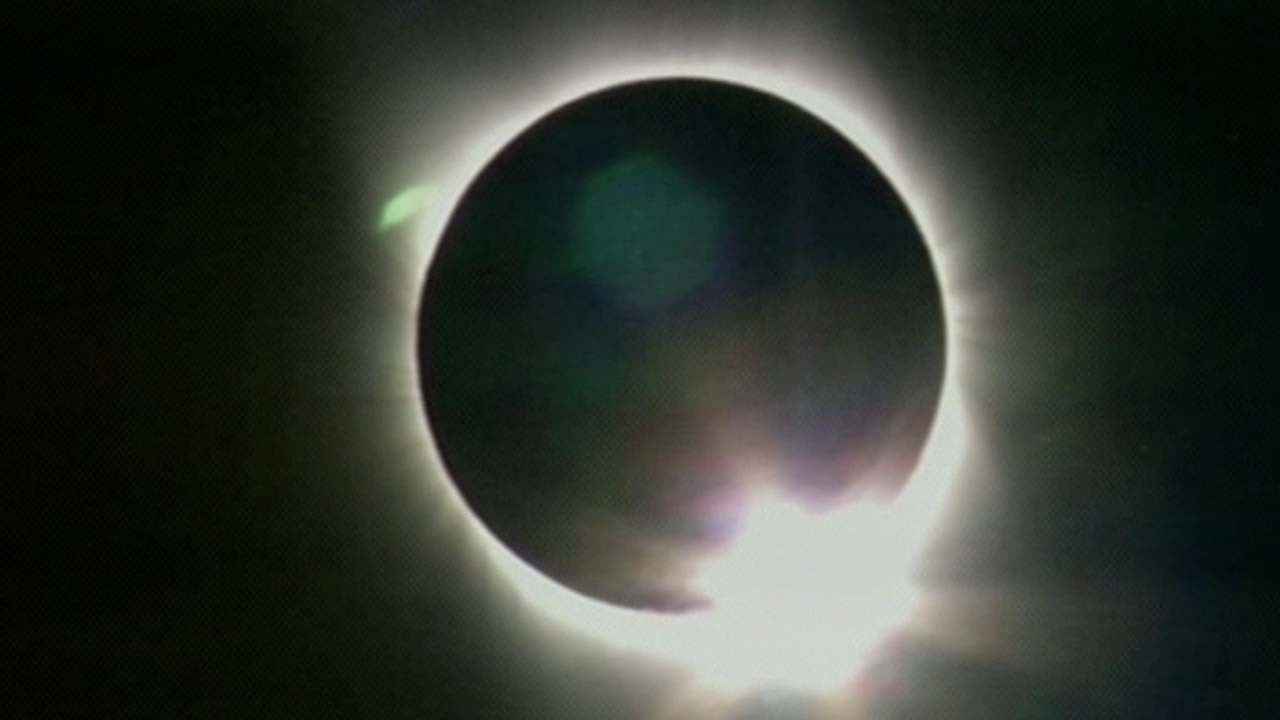Total Solar Eclipse Viewed from Australia
On Nov. 13, 2012, a narrow corridor in the southern hemisphere experienced a total solar eclipse. The corridor lay mostly over the ocean but also cut across the northern tip of Australia where both professional and amateur astronomers gathered to watch.
During a solar eclipse one can see — using appropriate instruments to protect the eyes since you should never look at the sun directly — dim structures around the edges of the sun. These structures are the sun's atmosphere, the corona, which extends beyond the more easily seen surface, known as the photosphere.
In modern times, we know that the corona is constantly on the move. Made of electrified gas, called plasma, the solar material dances in response to huge magnetic fields on the sun. Structural changes in these magnetic fields can also give rise to giant explosions of radiation called solar flares, or expulsions of solar material called coronal mass ejections, CMEs — which make the corona a particularly interesting area to study.
Hinode is a joint JAXA/NASA mission to study the connections of the Sun's surface magnetism, primarily in and around sunspots. The orbit of Hinode resulted in two eclipses this time, each with a somewhat different perspective. The first eclipse was total. During the second, the moon skimmed the left limb of the sun for a partial eclipse.
Movie of the total solar eclipse of Nov. 13, 2012.
Credit: CNES/CNRS/NASA

A total solar eclipse was visible from the Northern tip of Australia on Nov. 13, 2012 at 3:35 EST. The light halo visible around the edges of the moon is the sun's atmosphere, the corona.
Courtesy of Romeo Durscher
The JAXA/NASA Hinode mission witnessed two solar eclipses on Nov. 13, 2012, near in time to when a solar eclipse was visible in the southern hemisphere. This movie shows the first, a total eclipse.
Credit: JAXA/NASA/SAO
The second of two solar eclipses witnessed on Nov. 13, 2012 by Hinode, in which the moon skims the left limb of the sun for a partial eclipse.
Credit: JAXA/NASA/SAO

A total solar eclipse was visible from the Northern tip of Australia on Nov. 13, 2012 at 3:35 EST. The light halo visible around the edges of the moon is the sun's atmosphere, the corona.
Credit: CNES/CNRS/NASA

A total solar eclipse was visible from the Northern tip of Australia on Nov. 13, 2012 at 3:35 EST. The light halo visible around the edges of the moon is the sun's atmosphere, the corona.
Credit: CNES/CNRS/NASA

A total solar eclipse was visible from the Northern tip of Australia on Nov. 13, 2012 at 3:35 EST. The light halo visible around the edges of the moon is the sun's atmosphere, the corona.
Credit: CNES/CNRS/NASA

Viewing the total solar eclipse from the Northern tip of Australia on Nov. 13, 2012 at 3:35 EST.
Courtesy of Romeo Durscher

Clouds partially hide the solar eclipse.
Courtesy of Romeo Durscher

Clouds obscure the total solar eclipse on Nov. 13, 2012.
Courtesy of Romeo Durscher

A total solar eclipse was visible from the Northern tip of Australia on Nov. 13, 2012 at 3:35 EST. The light halo visible around the edges of the moon is the sun's atmosphere, the corona.
Courtesy of Romeo Durscher

A total solar eclipse was visible from the Northern tip of Australia on Nov. 13, 2012 at 3:35 EST. The light halo visible around the edges of the moon is the sun's atmosphere, the corona.
Courtesy of Romeo Durscher

A total solar eclipse was visible from the Northern tip of Australia on Nov. 13, 2012 at 3:35 EST.
Courtesy of Romeo Durscher
Credits
Please give credit for this item to:
NASA's Goddard Space Flight Center. However, individual images should be credited as indicated above.
-
Producer
- Scott Wiessinger (USRA)
-
Writer
- Karen Fox (ADNET Systems, Inc.)
Release date
This page was originally published on Wednesday, November 14, 2012.
This page was last updated on Wednesday, May 3, 2023 at 1:52 PM EDT.
